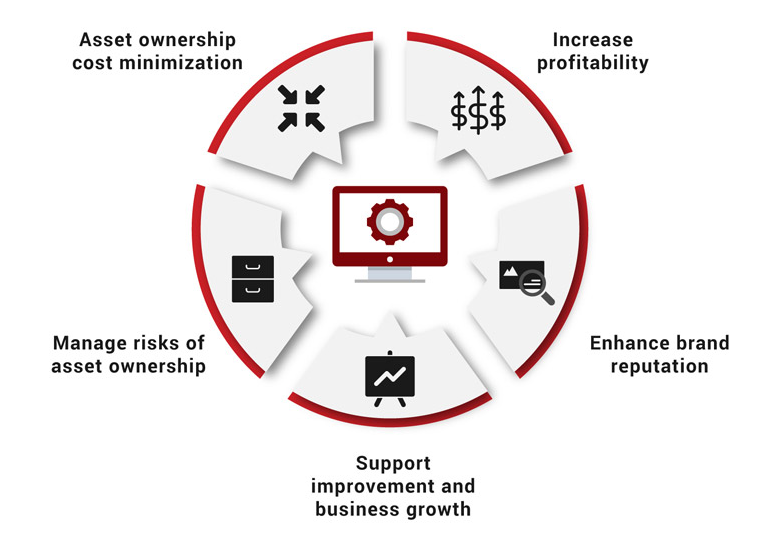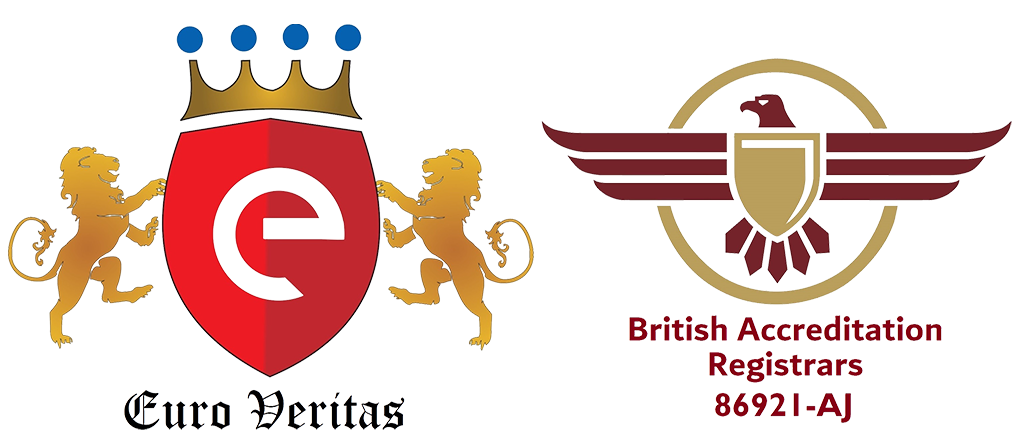ISO 55001:2014 Asset management — Management systems — Requirements Euro Veritas, UK (www.euroveritas.com) accreditated from BAR-UK
Procedure No. EVL/AMMS/C-A/5680/C-2
ISO 55001:2014 is an International Standard from ISO which specifies requirements for an asset management system within the context of the organization.
Following are the ISO 55000 Series standard for Asset Management.
• ISO 55001:2014 can be applied to all types of assets and by all types and sizes of organizations.
• ISO 55001 - sets out the requirements of an asset management system
• ISO 55002 - provides additional useful guidance for applying ISO 55001
• ISO 55000 - gives an overview of the subject and sets out principles and terminology.
ISO 55001 is an asset management system standard, the main objective of which is to help organizations manage the lifecycle of all its assets more effectively. By implementing ISO 55001:2014 standard, organizations will have better control over daily activities, achieve higher return with their assets, and reduce the total cost of risk.
ISO 55001:2014 can be applied to all types of companies, and to all types of assets. The outcomes consist of a growth in effectiveness accompanied by a dramatic drop in unit cost. This framework also supports continual improvement of performance and offers improvements for an organization of any industry, type or size.
Why Asset Management is important for you?
ISO 55001 provides guidance towards significant asset management improvements by enabling you to meet the stakeholder, business and legal requirements. It is the company’s most potent defense for saving money and time. By managing the assets properly you will be able to use your available assets wisely and get more out of their utilization while delivering added value to the business.
It is designed to support you in the proper handling of processes and risks, which will lead to the improvement of current and future company performance. Moreover, the implementation of an Asset Management System that complies with ISO 55001 enables the organization to align its objectives with asset management system objectives which leads the organization towards achieving its intended outcomes. Moreover, ISO 55001 aligns the organization’s objectives with asset management objectives since the purpose of asset management is achieving organizational objectives.
What Is ISO 55001 Certification?
Being ISO 55001 certified from [Euro Veritas, UK (www.euroveritas.com) accreditated from BAR-UK] means that the organization is capable of helping your organization in developing an active approach to lifecycle asset management. With ISO 55001 certification you demonstrate your skills in being able to support your organizational growth by:
• managing assets effectively;
• mitigating and managing risk, and
• improving the financial performance of your organization.
In the world of complex and ever-changing financial marketplaces, ISO 55001 certification is crucial in proving the ability to run a more streamlined operation and a good corporate reputation. Moreover, this certification from [Euro Veritas, UK (www.euroveritas.com) accreditated from BAR-UK] helps you as an individual to differentiate yourself from other professionals involved in the Assets Management.
Benefits of ISO 55001 Asset Management
[Euro Veritas, UK (www.euroveritas.com) accreditated from BAR-UK] ISO 50001 Certified companies will have the opportunity to gain many benefits, but not limited to:
• Development of viable and predictable cash flows
• Ability to manage asset’s lifecycle
• Ability to ensure that assets fulfill their necessary function
• Support improvement and business growth
• Support an organization during the process of establishing, implementing, maintaining and improving an Asset Management System
• Increase profitability
• Manage risk related to asset ownership
• Enhance brand reputation

Other potential benefits of ISO 55001 certification
Effective management of value, risk and reliability
Good governance, and a good understanding and control of assets, can improve stakeholder confidence (e.g. customers and regulators acting on behalf of customers) and result in lower insurance premiums
Seamless integration of AMS into Integrated Management Systems
Current HSE, Security, Information Security, Quality, Environment and Business Continuity Programs require current knowledge of assets and effective management of assets and related risks. The introduction of a comprehensive AMMS into the integrated management systems adds significant value to the overall Risk and Business Management Model of the organization.
Standardize and simplify
Asset management allows large organizations to standardize and simplify plants and equipment, reducing costs for spares and supplies, as well as training and support. The optimized asset management programs assure maximizing the value and taking advantage of the opportunities for growth.
Personal and process safety
Effective asset management improves both personal and process safety, reducing the risk of injury and catastrophic events. The proactive risk management and operational management of assets, assures minimizing the probability of incidents and accidents.
Image and reputation
Assets contribute to the reputation and image of the organization, just as they contribute to its operation. Assets are often the front door to the enterprise, such as in hospitality and retail, and improved design contributes directly to increased visits.
The Requirements of ISO 55001 standard:
The ISO 55001 standard uses a structure of 10 clauses as per Annex SL which, roughly grouped together, cover four key areas:
1. Improved financial performance – The ISO 55001 Asset Management System can improve your return on investment by managing expenditure, driving down costs and protecting asset values.
2. Improved risk management – The framework’s structured reviews enable you to give your managers accurate information on assets. This will improve operational efficiency and effectiveness while reducing the risks of asset ownership.
3. Standardized reporting – ISO 55001 enables your organisation to compare its performance with other industries, in the public and private sectors, to ensure you are implementing best practice.
4. Enhanced reputation – Implementing ISO 55001 will ensure your company complies with its legal obligations and protects its assets, increasing customer satisfaction and stakeholder confidence.
5. Strengthened business growth – This structured and coordinated asset management system will help you develop clear plans that everyone understands and can support, so driving process improvements across your organisation.
6. Enhanced environmental performance – Through improved asset management, you will improve business sustainability and meet the expectations of your stakeholders for economic performance and social responsibility.
7. Improve organizational efficiency and effectiveness in managing risks associated with ownership of assets.
8. Save cost through optimisation of asset life.
9. Improve health, safety, and environmental performance.
10. Improve health and safety in the industrial sector.
11. Demonstrates systematic supply chain security management.
12. Develop business cooperation along the supply chain.
13. Demonstrate a benchmark of good practice in asset management across industrial sectors.
14. Establishing a proactive life-cycle asset management system to realize the value of an organization’s assets.
15. Manages risks and improves performance through informed decision making, associated with ownership of assets.
16. Establishes assurance for customers and regulators – where assets play a key role in the provision and quality of products and services.
17. Gives confidence to stakeholders through the knowledge that a strategy is in place to ensure assets meet the necessary safety and performance requirements.
18. Supports international business development – good asset management is critical for delivering products and services.
19. Demonstrates social responsibility and commitment to the specific culture of the business, building a sense of pride and ownership among employees


